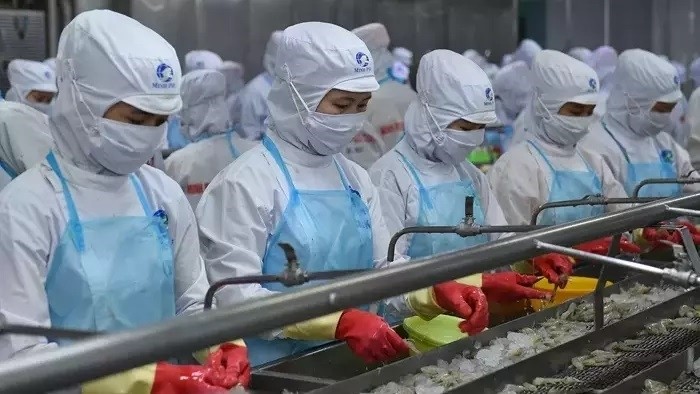Focus on major markets
Anticipating that European consumers will shift from fresh seafood to conveniently packaged and cooked frozen products, Sao Ta Food JSC has focused its resources on these products. After exporting 937 tonnes of shrimp worth US$10.7 million to Europe in February, the company’s farms have started raising juvenile shrimp to prepare for the upcoming harvest.
Sao Ta Chairman Ho Quoc Luc said the company is trying to balance its three main markets of Europe, Japan and the US in 2020.
According to VASEP, the association of seafood exporters and producers, the first quarter of 2020 is not the main harvest season, which falls from April and May onwards.The association stated that the coronavirus outbreak in China has forced many large markets to reduce imports from the world’s second largest economy so this could present an opportunity for Vietnam to increase its exports.
It is worth noting that Vietnamese shrimp is seeing great opportunities from the US and EU markets as the US anti-dumping tariffs have been eliminated and the EU-Vietnam Free Trade Agreement (EVFTA) will come into effect this year. The EU and the US are the largest importers of Vietnamese shrimp, accounting for 20.5% and 19.4% of Vietnam’s total shrimp exports respectively.
Under the EVFTA, tariffs on most raw shrimp products will drop from 12-20% to 0% upon its inception while tariffs on processed shrimp will be eliminated after seven years.
Enhancing competitiveness
Advantages aside, the Department of Export-Import has noted that Vietnam will face greater competition in the global market as other countries are increasing their shrimp farming areas. Furthermore, import countries are tightening requirements regarding quality and safety. This problem is further aggravated as small-scale farming is the biggest bottleneck to Vietnam’s shrimp sector, making it unable to trace origin and acquire international certificates. The coronavirus outbreak is bound to alter consumption habits, requiring exporters to quickly adapt to the changes.
According to VASEP Secretary-General Truong Dinh Hoe, farmers need to keep in close contact with buying agents and processing-exporting companies to learn about demand and quality requirements and then make the right decision to raise shrimp effectively. For their part, firms need to attract more foreign investment, enhance technology and product quality and take part in regional supply chains in order to capitalise on the opportunities offered by the EVFTA.
Aware of the opportunities and urgent need to meet new requirements, Vietnamese shrimp companies are making genuine efforts to enhance their production and business capacity. Sao Ta Chairman Ho Quoc Luc said Vietnamese shrimp companies are currently at the top of the world so if the quality is good, there is still room for growth.
He added that Sao Ta has considered sustainable development as its foremost target and attached importance to selecting safe and traceable raw shrimp while paying attention to brand development.
Viet Uc, another major seafood exporter, has also introduced supports for farmers so that they will adopt good farming practices and make their shrimp products traceable so as to smooth the way for their export to Europe.
Vietnam has set a target to export US$10 billion worth of seafood in 2020, of which shrimp account for about US$4-4.2 billion.
















